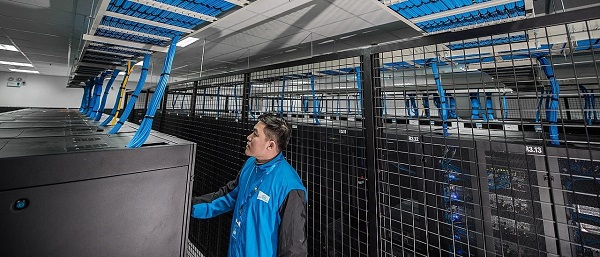Daily Caller
Shoot Down The Drones!


From the Daily Caller News Foundation
By Jason Lewis
If you were to ask the question: Why are so many drones the size of cars flying over New Jersey? You would think someone in the government might know.
Alas, this is the “deep state” era and after a history of coverups (from Russian collusion to COVID lab leaks to Hunter Biden’s laptop), the Feds are either lying or incompetent. If it is a high-tech repeat of the Chinese balloon fiasco, you have to wonder what Xi Jinping has on the Biden family.
OK, not really.
Regardless, the drone sightings have spread across the Northeast, near sensitive locations and even temporarily shutting down a local airport — yet federal officials insist there is no security threat. But how would they know unless they are the ones putting them up?
Which, by the way, is one of the so-called conspiracy theories that suggests the Feds might be looking for something nefarious they don’t want the public to know. The bottom line is no one is being told what is going on, but more and more folks know exactly what they would like to do about it.
Shoot the damn things down.
Predictably, craven New Jersey Gov. Phil Murphy (who had eagerly reiterated there were “no public safety risks,”) quickly reminded his constituents they don’t have authority to shoot down unmanned aircraft systems (UAS).
It is indeed illegal under federal law to shoot at aircraft within the National Airspace System (NAS). And for good reason if you’re talking about protecting lives engaged in military, commercial or personal air traffic.
But as we are witnessing, the centralization of power has its limits. Especially when it comes to preventing state officials from doing their duty. Relying on bureaucrats in Washington to handle local exigencies is still a fool’s errand.
The main obstacle to giving local authorities more leeway has been the largest and most powerful of commercial (and hobby) interests. Amazon and Google haven’t been shy about flexing their lobbying muscle in support of federal preemption of state law that might get in the way of delivery drones constantly buzzing over your house en route to your neighbor’s.
The invasions of privacy could get even worse. Imagine a perverted neighbor with a camera mounted drone hovering outside your bathroom window?
So, who ‘ya supposed to call? Why, the Federal Aviation Administration (FAA), of course. They’ll get right back to you.
Above and beyond the bureaucratic inertia, homeowners are supposed to count on an FAA that fast-tracked Alphabet’s Wing Aviation drones for consumer-goods deliveries? That was 2019, about a year and a half after I introduced the Drone Innovation Act preventing the Feds from authorizing UAS within the “immediate reaches” above someone’s property without the owner’s permission.
Navigable airspace above 400 feet was left in the hands of Washington, but the legislation allowed for the traditional “police powers” of state and local government to protect common law rights to privacy from an aerial nuisance or trespass.
Not surprisingly, the special interests marshaled their forces to block a bill that would have put reasonable limits on federal preemption of state and local laws, which are especially prevalent in areas “affecting commercial UAS operators.”
Somewhere, Jeff Bezos must still be smiling.
Former Rep. Jason Lewis (R-Minn.) writes at jasonlewis.substack.com and is the author of Party Animal, The Truth About President Trump, Power Politics & the Partisan Press now out in paperback.
Artificial Intelligence
AI Faces Energy Problem With Only One Solution, Oil and Gas


From the Daily Caller News Foundation
Which came first, the chicken or the egg? It’s one of the grand conundrums of history, and it is one that is impacting the rapidly expanding AI datacenter industry related to feeding its voracious electricity needs.
Which comes first, the datacenters or the electricity required to make them go? Without the power, nothing works. It must exist first, or the datacenter won’t go. Without the datacenter, the AI tech doesn’t go, either.
Logic would dictate that datacenter developers who plan to source their power needs with proprietary generation would build it first, before the datacenter is completed. But logic is never simple when billions in capital investment is at risk, along with the need to generate profits as quickly as possible.
Dear Readers:
As a nonprofit, we are dependent on the generosity of our readers.
Please consider making a small donation of any amount here.
Thank you!
Building a power plant is a multi-year project, which itself involves heavy capital investment, and few developers have years to wait. The competition with China to win the race to become the global standard setters in the AI realm is happening now, not in 2027, when a new natural gas plant might be ready to go, or in 2035, the soonest you can reasonably hope to have a new nuclear plant in operation.
Some developers still virtue signal about wind and solar, but the industry’s 99.999% uptime requirement renders them impractical for this role. Besides, with the IRA subsidies on their way out, the economics no longer work.
So, if the datacenter is the chicken in this analogy and the electricity is the egg, real-world considerations dictate that, in most cases, the chicken must come first. That currently leaves many datacenter developers little choice but to force their big demand loads onto the local grid, often straining available capacity and causing utility rates to rise for all customers in the process.
This reality created a ready-made political issue that was exploited by Democrats in the recent Virginia and New Jersey elections, as they laid all the blame on their party’s favorite bogeyman, President Donald Trump. Never mind that this dynamic began long before Jan. 20, when Joe Biden’s autopen was still in charge: This isn’t about the pesky details, but about politics.
In New Jersey, Democrat winner Mikie Sherrill exploited the demonization tactic, telling voters she plans to declare a state of emergency on utility costs and freeze consumers’ utility rates upon being sworn into office. What happens after that wasn’t specified, but it made a good siren song to voters struggling to pay their utility bills each month while still making ends meet.
In her Virginia campaign, Democrat gubernatorial winner Abigail Spanberger attracted votes with a promise to force datacenter developers to “pay their own way and their fair share” of the rising costs of electricity in her state. How she would make that happen is anyone’s guess and really didn’t matter: It was the tactic that counted, and big tech makes for almost as good a bogeyman as Trump or oil companies.
For the Big Tech developers, this is one of the reputational prices they must pay for putting the chicken before the egg. On the positive side, though, this reality is creating big opportunity in other states like Texas. There, big oil companies Chevron and ExxonMobil are both in talks with hyperscalers to help meet their electricity needs.
Chevron has plans to build a massive power generation facility that would exploit its own Permian Basin natural gas production to provide as much as 2.5 gigawatts of power to regional datacenters. CEO Mike Wirth says his team expects to make a final investment decision early next year with a target to have the first plant up and running by the end of 2027.
ExxonMobil CEO Darren Woods recently detailed his company’s plans to leverage its expertise in the realm of carbon capture and storage to help developers lower their emissions profiles when sourcing their needs via natural gas generation.
“We secured locations. We’ve got the existing infrastructure, certainly have the know-how in terms of the technology of capturing, transporting and storing [carbon dioxide],” Woods told investors.
It’s an opportunity-rich environment in which companies must strive to find ways to put the eggs before the chickens before ambitious politicians insert themselves into the process. As the recent elections showed, the time remaining to get that done is growing short.
David Blackmon is an energy writer and consultant based in Texas. He spent 40 years in the oil and gas business, where he specialized in public policy and communications.
Business
Will Paramount turn the tide of legacy media and entertainment?


From the Daily Caller News Foundation
The recent leadership changes at Paramount Skydance suggest that the company may finally be ready to correct course after years of ideological drift, cultural activism posing as programming, and a pattern of self-inflicted financial and reputational damage.
Nowhere was this problem more visible than at CBS News, which for years operated as one of the most partisan and combative news organizations. Let’s be honest, CBS was the worst of an already left biased industry that stopped at nothing to censor conservatives. The network seemed committed to the idea that its viewers needed to be guided, corrected, or morally shaped by its editorial decisions.
This culminated in the CBS and 60 Minutes segment with Kamala Harris that was so heavily manipulated and so structurally misleading that it triggered widespread backlash and ultimately forced Paramount to settle a $16 million dispute with Donald Trump. That was not merely a legal or contractual problem. It was an institutional failure that demonstrated the degree to which political advocacy had overtaken journalistic integrity.
Dear Readers:
As a nonprofit, we are dependent on the generosity of our readers.
Please consider making a small donation of any amount here.
Thank you!
For many longtime viewers across the political spectrum, that episode represented a clear breaking point. It became impossible to argue that CBS News was simply leaning left. It was operating with a mission orientation that prioritized shaping narratives rather than reporting truth. As a result, trust collapsed. Many of us who once had long-term professional, commercial, or intellectual ties to Paramount and CBS walked away.
David Ellison’s acquisition of Paramount marks the most consequential change to the studio’s identity in a generation. Ellison is not anchored to the old Hollywood ecosystem where cultural signaling and activist messaging were considered more important than story, audience appeal, or shareholder value.
His professional history in film and strategic business management suggests an approach grounded in commercial performance, audience trust, and brand rebuilding rather than ideological identity. That shift matters because Paramount has spent years creating content and news coverage that seemed designed to provoke or instruct viewers rather than entertain or inform them. It was an approach that drained goodwill, eroded market share, and drove entire segments of the viewing public elsewhere.
The appointment of Bari Weiss as the new chief editor of CBS News is so significant. Weiss has built her reputation on rejecting ideological conformity imposed from either side. She has consistently spoken out against antisemitism and the moral disorientation that emerges when institutions prioritize political messaging over honesty.
Her brand centers on the belief that journalism should clarify rather than obscure. During President Trump’s recent 60 Minutes interview, he praised Weiss as a “great person” and credited her with helping restore integrity and editorial seriousness inside CBS. That moment signaled something important. Paramount is no longer simply rearranging executives. It is rethinking identity.
The appointment of Makan Delrahim as Chief Legal Officer was an early indicator. Delrahim’s background at the Department of Justice, where he led antitrust enforcement, signals seriousness about governance, compliance, and restoring institutional discipline.
But the deeper and more meaningful shift is occurring at the ownership and editorial levels, where the most politically charged parts of Paramount’s portfolio may finally be shedding the habits that alienated millions of viewers.The transformation will not be immediate. Institutions develop habits, internal cultures, and incentive structures that resist correction. There will be internal opposition, particularly from staff and producers who benefited from the ideological culture that defined CBS News in recent years.
There will be critics in Hollywood who see any shift toward balance as a threat to their influence. And there will be outside voices who will insist that any move away from their preferred political posture is regression.
But genuine reform never begins with instant consensus. It begins with leadership willing to be clear about the mission.
Paramount has the opportunity to reclaim what once made it extraordinary. Not as a symbol. Not as a message distribution vehicle. But as a studio that understands that good storytelling and credible reporting are not partisan aims. They are universal aims. Entertainment succeeds when it connects with audiences rather than instructing them. Journalism succeeds when it pursues truth rather than victory.
In an era when audiences have more viewing choices than at any time in history, trust is an economic asset. Viewers are sophisticated. They recognize when they are being lectured rather than engaged. They know when editorial goals are political rather than informational. And they are willing to reward any institution that treats them with respect.
There is now reason to believe Paramount understands this. The leadership is changing. The tone is changing. The incentives are being reassessed.
It is not the final outcome. But it is a real beginning. As the great Winston Churchill once said; “Now this is not the end. It is not even the beginning of the end. But it is, perhaps, the end of the beginning”.
For the first time in a long time, the door to cultural realignment in legacy media is open. And Paramount is standing at the threshold and has the capability to become a market leader once again. If Paramount acts, the industry will follow.
Bill Flaig and Tom Carter are the Co-Founders of The American Conservatives Values ETF, Ticker Symbol ACVF traded on the New York Stock Exchange. Ticker Symbol ACVF
Learn more at www.InvestConservative.com
-

 Crime2 days ago
Crime2 days agoCBSA Bust Uncovers Mexican Cartel Network in Montreal High-Rise, Moving Hundreds Across Canada-U.S. Border
-

 Environment2 days ago
Environment2 days agoThe Myths We’re Told About Climate Change | Michael Shellenberger
-

 Health2 days ago
Health2 days agoLack of adequate health care pushing Canadians toward assisted suicide
-

 Alberta1 day ago
Alberta1 day agoATA Collect $72 Million in Dues But Couldn’t Pay Striking Teachers a Dime
-

 Artificial Intelligence2 days ago
Artificial Intelligence2 days agoAI Faces Energy Problem With Only One Solution, Oil and Gas
-

 Media1 day ago
Media1 day agoBreaking News: the public actually expects journalists to determine the truth of statements they report
-

 Artificial Intelligence1 day ago
Artificial Intelligence1 day agoAI seems fairly impressed by Pierre Poilievre’s ability to communicate
-

 National1 day ago
National1 day agoWatchdog Demands Answers as MP Chris d’Entremont Crosses Floor






